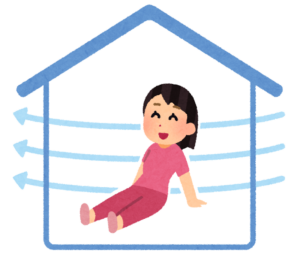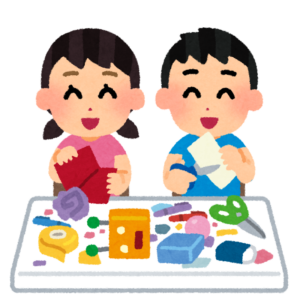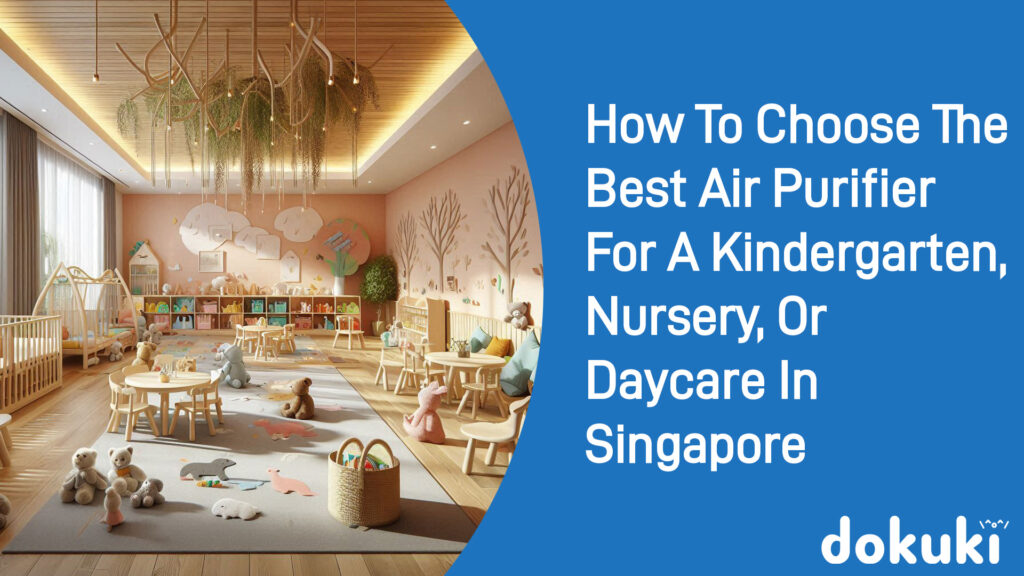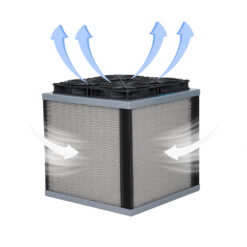Maintaining a clean and hygienic environment is paramount for kindergartens, nurseries, and daycare centers. This not only applies to surfaces, but also the air that we breathe indoors, as harmful pathogens such as viruses, pollen, dust, and smoke can linger in the air for hours and cause harmful health effects to children and adults.
In this article, we will share ways on how you can choose the best air purifier for establishments catered towards young children, and you will also find out whether what you’re buying meets the latest health standards.
1. Importance of clean air indoors

Before we dive in, let’s explain why clean air, especially one that meets the latest health standards, is important.
Data shows that up to 50% of children aged 4 to 17 in Singapore suffer from allergies, which could be triggered by pollutants such as pollen, smoke, and dust.
Indoor spaces where young children gather and interact closely with each other for prolonged periods of time could also seed superspreader events of infectious airborne diseases like SARS-Cov2 (COVID-19) and influenza. This could increase absentee rates not just among children, but also teachers and other staff.
A study from Italy shows that increasing number of air changes per hour could help to cut COVID-19 transmission by 82%.
With the right type and sizing of room air purifiers, as well as proper usage and maintenance, you can improve the indoor air quality of your establishments.
2. Four important room air purifier metrics
When deciding on which room air purifier you should purchase, you should scroll pass all the marketing and get straight to these key metrics:
- Clean Air Delivery Rate (CADR). This tells you the overall air cleaning performance of an air purifier in cubic meters per hour (m³/h) after factoring in filtration efficacy, air pressure, and air flow. Keep in mind that most manufacturers only provide the CADR at top speed, so you may have to find out what the CADR is for other speeds as well.
- Noise levels. You’ll need something that isn’t too loud to reduce noise pollution. The noise level of an air purifier is directly related to the speed setting and consequently its CADR. For premises catered to young children, we recommend finding an air purifier that has a speed setting that could be set to 47 dB or lower. Take note that most manufacturers only list the noise level at the lowest setting (the CADR at the lowest effectiveness), so you may have to find out the noise level at other settings as well.
- Clean Air per Singapore Dollar. How much clean air are you getting out per dollar you spend on air purifiers? Divide the maximum CADR (m³/h) by the price of the air purifier to find out. You should get something that provides the highest clean air per dollar.
- Maintenance cost. Find out how much you have to spend on replacement filters. Divide the cost of the filter by the average number of months it can last (as advised by the manufacturer), and multiply by 12 to get a rough estimate on the annual replacement cost for a single unit.
Besides these key metrics, you should also be careful of room air purifiers that use “ion technology”, ionizers, or ozone generators as they could generate ozone. It is best not to procure such products as some parents have concerns with them, health authorities such as the American EPA do not encourage their use due to potential harmful effects. Learn more about the dangers of ionizers and ozone air purifiers.
3. Calculating the number of units required

Now, we will have to calculate the number of air purifiers required. We will be using the guideline stated in ASHRAE 241 for daycare centers.
Method 1 – Clean Airflow Rate (recommended)
The recommended method is to calculate by using the clean airflow rate of a given room.
In order to do this, you will need the number of occupants in a room. To provide some buffer, you should take the maximum number of occupants that the room can accommodate.
Next, multiply the number of occupants by 20 lps (liters per second) to get the clean airflow rate required in the room.
Finally, convert the result you got in the previous step into m³/h by multiplying the clean airflow rate in lps by 3.6.
If the CADR of the air purifier you’re looking for matches or exceeds the result and is able to do so at a noise level at 47 dB or lower, that air purifier meets the requirements. Otherwise, you will require more units to meet the requirements.
Repeat this method for all the rooms you have in your establishment.
Here’s an example for reference:
1. A classroom that has 10 occupants (8 children and 2 staff)
2. Clean airflow rate required for the classroom: 10 x 20 lps = 200 lps
3. Clean airflow rate in m³/h: 200 lps x 3.6 m³/h = 720 m³/h
4. To meet this clean airflow rate while maintaining a noise level at or below 47 dB, you will need two AirFanta 3Pro units (setting 3, 46 dB, 420 m³/h CADR per unit)
Method 2 – Air Changes per Hour (ACH)
An alternative method is to calculate the ACH of a given room. This method is less precise as it doesn’t take into account the number of occupants.
First, click this link to access the ACH Calculator.
Next, enter the length, width, and height of the room. If you’re unsure of the room’s height, you can use the default value (2.6 m).
Enter the CADR of the air purifier with its speed setting that is at 47 dB or lower.
Finally, click “Calculate ACH” and check the result. If the result is 6.7 ACH is or higher, it meets the requirement. If it doesn’t, you will need more units.
Here’s an example for reference:
1. Classroom area is 42 m² and classroom height is 2.6 m
2. AirFanta 3Pro CADR at setting 3 (46 dB) is 378 m³/h. Enter that value and calculate
3. Result is 3.46 ACH. Multiply 378 m³/h by 2, which gives us 756 m³/h. Enter that value and calculate
4. Result is 6.7 ACH. This means that you will need two AirFanta 3Pro units (setting 3, 46 dB, 420 m³/h CADR per unit)
4. Other considerations
- Placement is important. Try to put the air purifiers at a location that is far away from occupants. This will help to reduce the noise level as the source of the sound is further away from everyone else. Putting them at the corner of the room is fine, but make sure there is some clearance (at least 5 to 15 cm depending on the manufacturer’s advice) between the air inlet/outlet and the wall or other furniture.
- If you are placing two or more air purifiers in the same room, try to space them out from each other as it will help clean the air faster.
- Maintenance is key. Schedule filter replacement orders and train staff to check and replace filters on a regular basis.
- Use timer plugs to automatically turn on/off the air purifier before and after business hours to extend filter lifespan and reduce power consumption.
Conclusion

By following these simple steps, you can improve and maintain a high indoor air quality in your establishment, which in turn will improve the health of all occupants and visitors and reduce absences among children and staff.
Still unclear? Contact us for a free consultation and we will help you figure it out.
Looking for a good air purifier? We got you covered

At dokuki, we strive to offer highly innovative products that substantially help to improve our customers’ quality of life without breaking the bank.
If you’re looking for a good room air purifier, we highly recommend the AirFanta 3Pro as it meets all four requirements for choosing the best purifier:
- It has a very high CADR for a consumer product, providing up to 702 m³/h of clean air in a room
- It offers the best cost performance among all room air purifiers in Singapore at 3.60 m³/h per Singapore Dollar. You’re paying S$195 for an air purifier that usually retails for S$1,000 or more.
- Noise levels range from 36 dB to 56 dB, which are within our recommendations
- In a 40 m² studio apartment, the AirFanta 3Pro (at its highest setting) cleans the air every 9 minutes (6.75 ACH). In a 15 m² bedroom, it cleans the air every 3.3 minutes (18 ACH), more frequent than most modern hospital facilities in the developed world.
Learn more about the AirFanta 3Pro here.
Room Air Purifier



